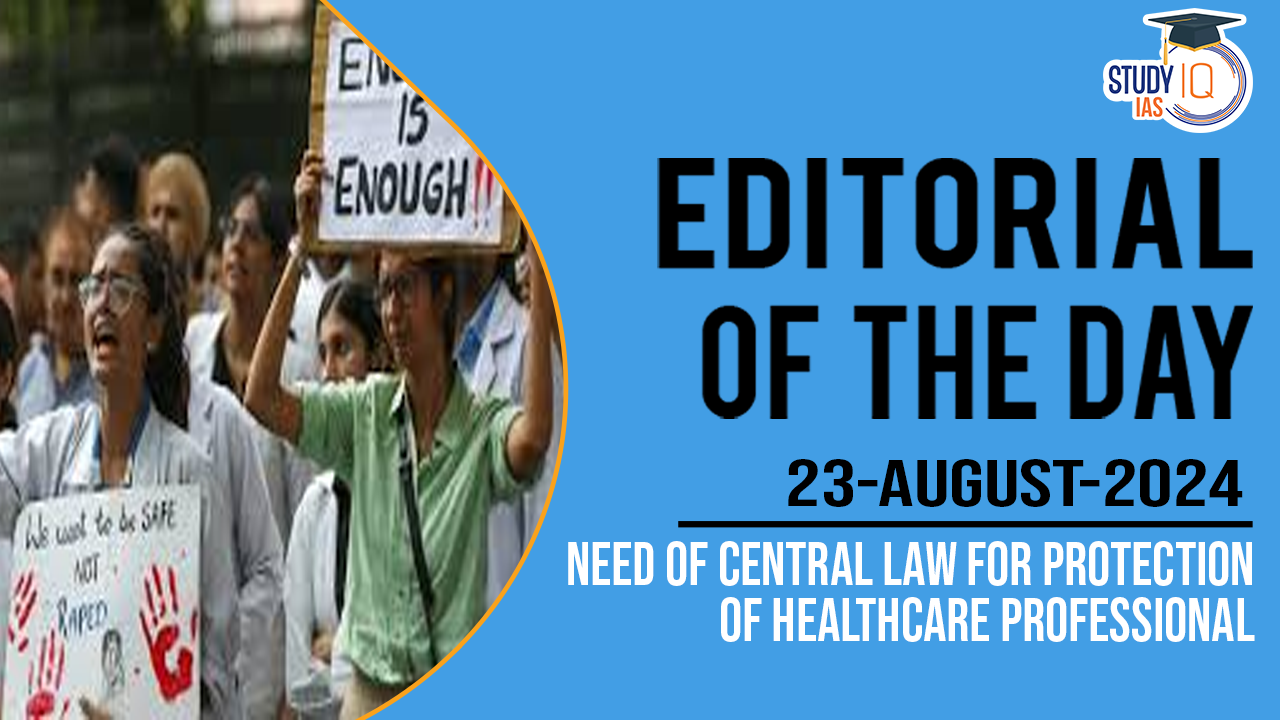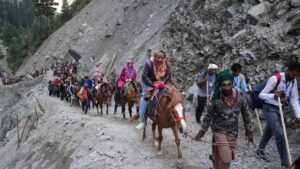Context: The rape and murder of a trainee doctor in Kolkata has intensified calls from medical professionals across India for a Central law to protect healthcare workers, a Bill for which was drafted in 2019 but never enacted.
Background
- The Healthcare Service Personnel and Clinical Establishments (Prohibition of violence and damage to property) Bill, 2019 also referred to as the “Central Protection Act for Doctors” was introduced in the Lok Sabha to tackle rising violence against healthcare workers.
- 25 States have enacted laws to protect medical professionals.
| Key Provisions of the Healthcare Service Personnel and Clinical Establishments (Prohibition of violence and damage to property) Bill, 2019 |
- Definition of Violence: Defines acts of violence against healthcare professionals, including physical assault, harassment, and property damage.
- Addresses violence based on caste, gender, religion, language, or place of birth.
- Offence Categories and Punishment: Categorizes offences as cognizable and non-bailable, allowing for arrest without a warrant.
- Prescribes imprisonment and fines, with severity based on the offence’s nature.
- Reporting and Grievance Redressal: Mandates reporting of violent incidents and establishes a grievance redressal mechanism for timely investigation and justice.
- Public Education: Emphasises public education about healthcare professionals’ challenges to foster understanding and reduce conflicts.
- Investigation Panels: Proposes creating panels to investigate violence cases and address long waiting times in healthcare settings, which contribute to tensions.
|
Need for Central Law
Rising Violence: Healthcare workers face increasing incidents of violence, including physical assaults and verbal abuse, often in stressful hospital environments.
- Example: In 1973, junior nurse Aruna Ramchandra Shanbaug was sexually assaulted at Mumbai Hospital, and spent over 41 years in a vegetative state before dying in 2015.
| Fact |
| An Indian Medical Association (IMA) survey found that over 75% of doctors in India encountered workplace violence, with women, who represent 30% of the medical workforce, being more vulnerable than their male colleagues. |
- Inconsistent Protections: While some States have laws, protections vary widely, leading to uneven enforcement and lack of comprehensive coverage.
- Example: Kerala’s 2012 legislation had drawbacks due to which amendments were incorporated in the Healthcare Service Persons and Healthcare Service Institutions Act following the murder of a Surgeon.
- Inadequate Enforcement: Existing laws at the State level often lack strict penalties and effective enforcement, reducing their deterrent effect.
- Systemic Challenges: Issues like poor communication between patients and doctors, high patient expectations, and inadequate healthcare infrastructure contribute to violence.
- International Examples: Other countries have implemented successful measures, such as zero-tolerance policies like in the UK and severe penalties, which India could emulate to improve safety.
| Fact |
- The National Health Service in the U.K. enforces a zero-tolerance policy on violence, backed by dedicated security teams and a robust reporting system.
- In the U.S., certain States classify assaults on healthcare workers as felonies, providing a significant deterrent.
- Australian hospitals have adopted safety measures such as security personnel, panic buttons, and mandatory de-escalation training.
|
- Unified Approach: A central law would ensure consistent standards and protections across the country, addressing gaps and providing a unified response to violence against healthcare professionals.
- National Medical Commission: The National Medical Commission (NMC) has advised developing comprehensive safety policies for medical colleges.
Recent Developments
| Demand of Protesting Doctors |
- Policy on Violence: Establish a Central Act to address violence against doctors and hospitals, integrating the 2023 amendments to the Epidemic Diseases Act into the proposed Hospital Protection Bill of 2019.
- Safe Zones for Hospitals: Designate hospitals as safe zones, requiring security measures such as CCTV, security personnel, and protocols similar to airport security.
- Working Conditions: Improve the working and living conditions for resident doctors, including addressing long shifts and inadequate rest spaces.
- Investigation and Justice: Ensure a thorough investigation into the Kolkata incident, deliver justice, and impose penalties on those involved in hospital vandalism.
- Compensation: Provide appropriate and dignified compensation to the victim’s family, reflecting the seriousness of the incident.
|
| Steps Taken |
- The Ministry of Health and Family Welfare: Issued an order requiring the head of an institution to file an FIR within six hours in the event of any violence against healthcare workers on duty.
- Supreme Court: Constituted a National Task Force
- National Medical Commission: The NMC mandated prompt investigation of violence against medical students, requiring an FIR and a detailed report to be sent to the NMC within 48 hours.
|
Sharing is caring!


 Operation Shiva 2025: Indian Army’s Ma...
Operation Shiva 2025: Indian Army’s Ma...
 World Youth Skills Day 2025, Theme, Hist...
World Youth Skills Day 2025, Theme, Hist...
 President Murmu Nominates Four Members t...
President Murmu Nominates Four Members t...





















